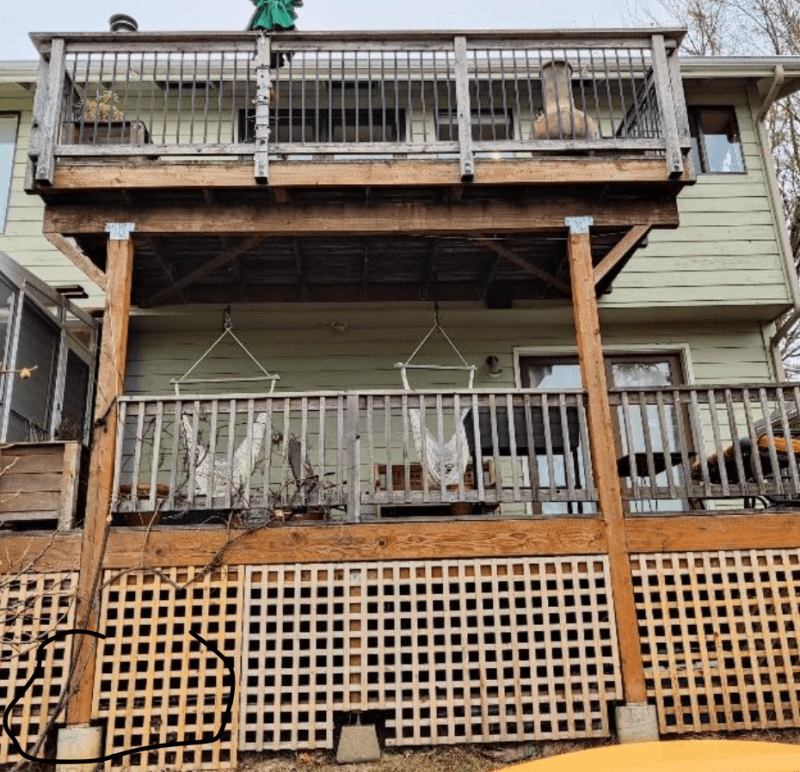BigfootBuildDecks
Structural
- Dec 14, 2022
- 1
What would you guys do about these piers? They are too small for the post in my opinion and even worse, they were poured directly onto an old footing that sticks out above grade. I want to make sure the deck is safe for my customers but I haven’t found any solutions I feel comfortable with. Could new concrete around the pier with rebar and epoxy into old footing and into pier with a rebar cage around the pier all tied together work? I would use a concrete bonding agent as well. The old footing is about 30 years old, my concern is that I don’t know if the pier is properly connected to it.


